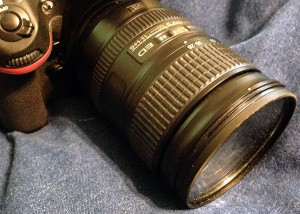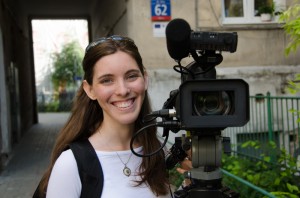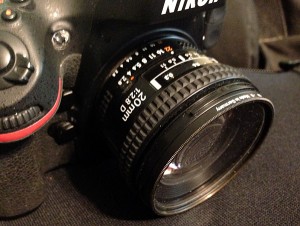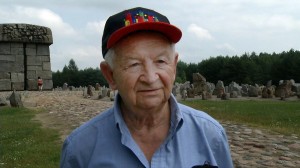 On my documentary filming trips overseas and here in the United States I also carry my trusty Nikon D800. The normal go-to lens for me is the 28-300mm, however that lens can add to the weight of the camera, and it does, but can also add to the attention it brings when on the streets and walkways. The solution to still capture the images and also be a little more “ stealth” is a prime lens.
On my documentary filming trips overseas and here in the United States I also carry my trusty Nikon D800. The normal go-to lens for me is the 28-300mm, however that lens can add to the weight of the camera, and it does, but can also add to the attention it brings when on the streets and walkways. The solution to still capture the images and also be a little more “ stealth” is a prime lens.
Fixed focal lengths are the better choice and not just for their better image quality. Yes, zoom lenses provide you the flexibility of several focal lengths within one lens, but that’s not necessarily an advantage when working on the street. Those critical moments that happen in front of the camera are often so fleeting that they can be easily lost while turning the zoom ring to the appropriate focal length. A fixed focal length eliminates that. You know exactly what you have to work with as soon as you attach the lens to the camera. At that point it becomes all about composition.
I have had many occasions when on the streets in Jerusalem, Rome and in the Nazi Concentration Camps in Poland when the prime lens afforded me the flexibility but also the ability to shoot quickly without fussing about the settings.
Prime lenses are also faster or offer a wider aperture (f1.4, f1.8 or f2) than most zoom lenses. This can be particularly important when you are shooting under low light conditions. That not only impacts your exposure options, but it also improves the effectiveness of the camera’s autofocus system when working under dim conditions.
The best photographs I think I have taken involve proximity to the subject and the moment. So, it’s often focal lengths of 50mm and wider that I will use on my camera.
 A 50mm or an equivalent focal length is a great place to start. Not only does the focal length closely match the field of view of human sight, but also the f1.8 versions of these lenses are incredibly affordable. If you are starting off with nothing more than the kit lens, the 50mm provides much better light gathering capability than a zoom with a variable aperture of f3.5-5.6. The f1.8 versions are very sharp lenses with minimal distortion. If you can afford the faster versions such as f1.4 or f1.2 and frequently work under low light, you may prefer these.
A 50mm or an equivalent focal length is a great place to start. Not only does the focal length closely match the field of view of human sight, but also the f1.8 versions of these lenses are incredibly affordable. If you are starting off with nothing more than the kit lens, the 50mm provides much better light gathering capability than a zoom with a variable aperture of f3.5-5.6. The f1.8 versions are very sharp lenses with minimal distortion. If you can afford the faster versions such as f1.4 or f1.2 and frequently work under low light, you may prefer these.
If you are using a camera that is designed with a Micro 4/3 or APS-C size sensor, you will need to multiply the focal length by the camera’s crop factor. For example, the 30mm f/1.4 lens when mounted on a camera with a crop factor of 1.6x will give you the equivalent focal length of 48mm, which qualifies as a “normal” focal length.
 If I have a favorite focal length it’s the 35mm. With a slightly wider field of view than the 50mm, this provides greater flexibility when it comes to creating interesting compositions. With the wider focal length, the background takes on a greater degree of importance. Effective images are not just about photographing an interesting subject, but creating a relationship between the subject and their surroundings.
If I have a favorite focal length it’s the 35mm. With a slightly wider field of view than the 50mm, this provides greater flexibility when it comes to creating interesting compositions. With the wider focal length, the background takes on a greater degree of importance. Effective images are not just about photographing an interesting subject, but creating a relationship between the subject and their surroundings.
If there is a focal length that provides a challenge for any photographer to use effectively, it’s a wide-angle lens such as a 24mm or 28mm. Because its field of view includes much more in the frame, the photographer has to be very conscious of what he chooses to include or exclude from the composition. The potential for distractions increases. But when used well, this focal length can produce amazing results. I tend to show RAW format so I have the ability to crop in post production at least 50-90% without losing quality.
Part of the effective use of this lens is that it forces you to work closer. It can demand a lot bit of courage on the part of the photographer to work more intimately, but the personal contact that you have with people on the street can also be a starting point for conversations and discoveries. I found that to be true in Kraków Poland when I met a elderly lady on the street as she was returning from shopping. I asked is I could take her picture, she agreed and I found some wonderful expressions and she pointed me in the direction for some great Polish pastries.
The choice of what and which lens you want to use at a particular time and location is next left up to you, and this entry into the blog is hopefully a starting point for discussion and experimentation.


